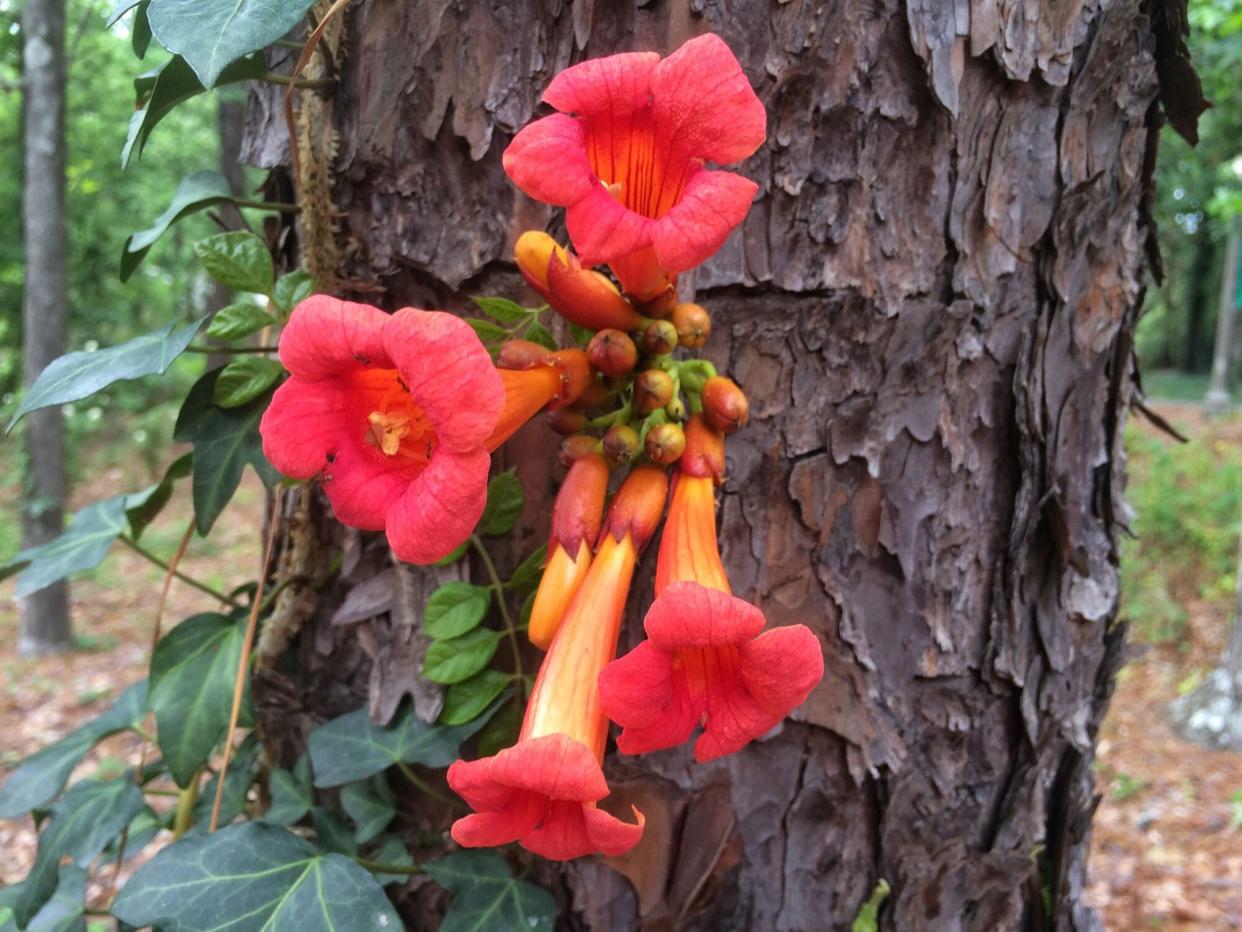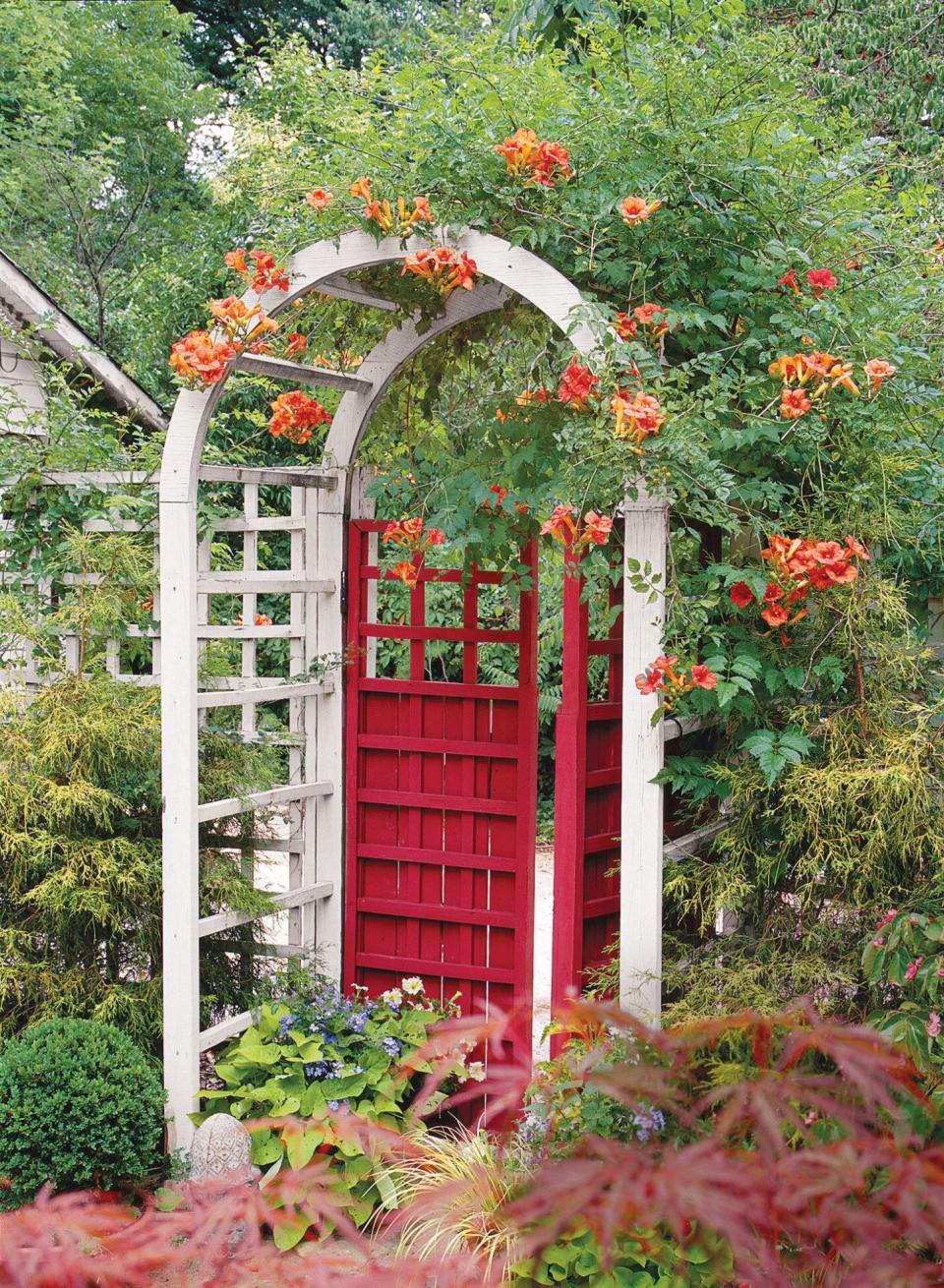Why You Should Just Say No to Trumpet Vine

Steve Bender Don't let its pretty flowers fool you into planting a thuggish trumpet vine.
A reader recently asked why I don't promote native plants that don't destroy the habitat. I responded that I write about many such plants I admire—like native wisteria, a much tamer version than its non-native relatives, and bottlebrush buckeye, an easy-to-grow shrub that's showy summer through fall. However, implicit in this reader's question, it seemed to me, was the notion that natives are inherently nicer and never take a toll on the land where they grow. In fact, many natives are awful garden plants that bully their neighbors and shouldn't be cultivated. Prime example: trumpet vine.
Why Trumpet Vine May Be Appealing
Native to the eastern United States and now escaped to the West, trumpet vine (Campsis radicans), also called trumpet creeper, gets its name from clusters of showy, red-orange, trumpet-shaped, 3-inch blooms that appear from early summer to fall. Hummingbirds swarm to the tubular blossoms, so to make the birdies happy, everyone should plant this vine, right? No.
How Trumpet Vine Spreads: Climbing, Seeding, and Rooting
Trumpet vine is not nice. Using aerial rootlets, it climbs trees about as fast as fighting squirrels, and ascends 40 feet or more. Its flowers form seeds that drop to the ground, making more vines that do the same thing. Even more sinister are its spreading roots that submarine underground far from the original plant and pop up suckers everywhere. Fighting rampant trumpet vines is a war you can't win without herbicide. You might as well plant poison ivy (another excellent native plant!).

Southern Living The safest way to grow Chinese trumpet vine is on a column or arbor where it can't reach other plants or structures.
Chinese Trumpet Vine Is Just as Invasive
As an alternative to native trumpet vine, I'm seeing more people growing its Asian counterpart, Chinese trumpet vine (Campsis grandiflora), shown above. This vine is even showier, featuring larger, flared, peachy-orange blooms. It's a fast climber too, reaching 30 feet or more if not carefully controlled. Some folks say it doesn't sucker like the native one. Hmm—I'll take a hard pass on this vine too. The safest way to grow Chinese trumpet vine is on a column or arbor where it can't reach other plants or structures.
How to Remove Trumpet Vine
To remove trumpet vine, pouring boiling water on this plant just isn't going to cut it. An herbicide that targets vines and brush should do the trick, and it may take a few applications. Vines like these should be cut at the roots first before spraying with the herbicide.
Choose Wisely, Native Plants Can Be Invasive Too
I will continue to make the following argument as long as I breathe—native plants are not always better. Choose the right plant for the right spot, no matter its place of origin. For ideas, here's some vine alternatives to trumpet vine, and drought-tolerant native plants that hold up to Southern summers.
More Invasive Plants to Avoid
Invasive plants can be a headache to deal with as they take over yards and kill other plants in their wake. If you can stay on top of controlling them, like English ivy or wisteria, they can be manageable, but to reduce maintenance, find alternatives and avoid introducing common invasive plants—from Japanese honeysuckle to Bradford pear—to your landscape.

